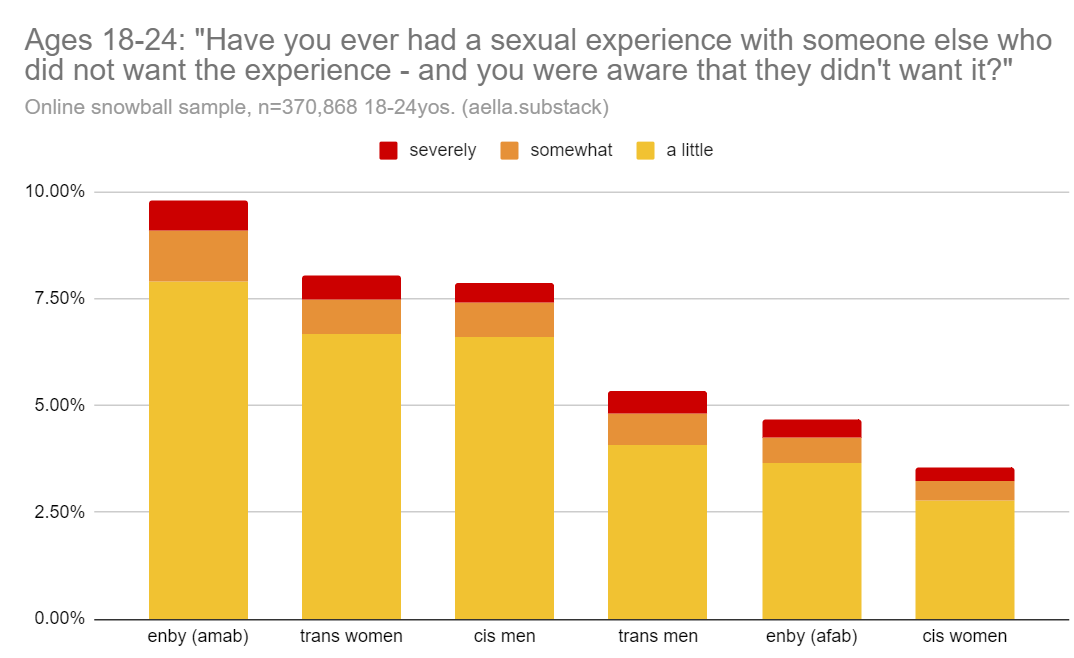Sex isn’t Entailed
Consider the following sentence:1
Only one of the students believes in herself.
I claim that this sentence is false (or at least has an acceptable false reading) in the situation where just two of the students, Artemis and Apollo, each believe in themselves.2 The sentence is (paraphraseable to) an instance of the following schema:
Only one of the has .
An instance is true just in case (i) some among the has , and (ii) every distinct among the lacks . In our particular case, the must be the students, and must be ( believes in herself), where ‘herself’ is anaphoric on — that is, to have , one must have , which is ( believes in ).
Now, Artemis believes in herself, so (i) is satisfied. So, if our sentence is false, it must be that (ii) is not satisfied. That is, it must be that some distinct student, who is not Artemis, has . By stipulation, the only student other than Artemis who has (and so might have ) is Apollo. So, Apollo has — Apollo believes in herself!
So, gendered pronouns can (at least in some cases) refer to someone who does not have the corresponding sex.
Sex matters
Nevertheless, in the overwhelming majority of cases, pronoun gender tracks sex. I claim that this function is important. Sex is socially important information, not least because males perpetuate the vast majority of violence — and sexual violence in particular. Importantly, it is sex, rather than gender identity, which matters here.

A horseshoe
Anyway: there seems to be a ‘horseshoe’ over some trans positions. I claim that trans activists should, by their own lights, adopt some gender-critical flavored things, and vice versa.
() For instance, gender-criticals will argue against obligatory pronoun declarations, for obvious reasons; but the correct trans activist position is also against obligatory pronoun declarations — on the trans activist views, these are bad because they force closeted trans people to either (a) misgender themselves, triggering dysphoria, or (b) coming out prematurely, which may be unsafe (or also trigger dysphoria by, say, highlighting the mismatch).
() Similarly for terminology: gender-criticals will write avoid saying ‘trans women’ (often making this one word — ‘transwomen’ — if they don’t buy the defense that ‘trans women’ can parse like ‘honorary woman’). But trans people themselves will commonly also use the terminology ‘transmasc(uline)’ / ‘transfem(inine)’, for (I take it) the inclusion of nonbinary people. But this terminology (I claim) is just better outright, even on the gender-critical views. First of all, it’s less confusing to the few remaining uninitiated: anecdotally, many people are initially confused as to whether ‘trans woman’ means male-to-female or female-to-male, but I take it (speculatively) that ‘transfeminine’ is not so ambiguous. Also, saying ‘transwoman’, on gender-critical views, is an unhappy compromise: while (on gender-critical views) no transfems are women, some transfems are definitely feminine.
Transracialism
White-to-black transracialism seems much more objectionable than black-to-white transracialism (perhaps, crudely, it’s a member of the oppressor class masquerading as a member of the oppressed class versus a member of the oppressed class trying to escape that oppression). Similarly, one might hold, for feminist reasons, that being transfem is much more objectionable than being transmasc. Actually, I’ve recently discovered that Holly Lawford-Smith seems to hold something like this view.
A romantic orientation?
Suppose that we observe (apparently, we do) the following pattern: a minority of males with a specific attraction to a certain group — say, obese people, or amputees — are also attracted to the idea of belonging to that group themselves. Does this hold when the group in question is women? If this is a general feature of male sexual attraction, it’d be more surprising for the answer to be no rather than yes. This also explains why the trans (especially transfem) community is disproportionately interested in sex, compared to other LGBT groups. You’d expect lesbian / gay / bisexual communities, as romantic orientation communities, to be more sexual than trans / nonbinary / intersex communities, as gender identity communities. I claim that this does hold for nonbinary, intersex, and transmasc communities, but that the transfem community is surprisingly interested in sex. This is puzzling, unless, say, (a significant subset of) transfemininity is a romantic orientation. But transfems will plausibly deny this, for various reasons — say, access to medical transition, or shame (there are much scarier ways to phrase ‘transfemininity is a romantic orientation’). To the extent that this denial affects introspection, too, there’s an interesting epistemic puzzle if your introspection apparently points against this hypothesis — should you trust introspection, or trust the evidence apparently undermining your introspection?